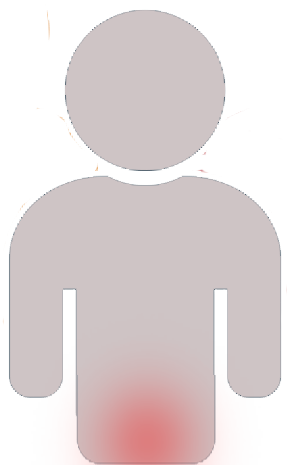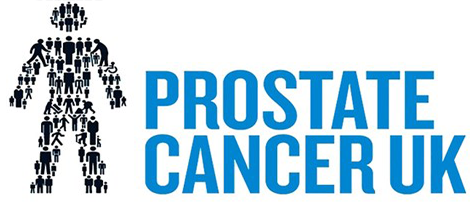Dave C
My Story so Far, May 2021
Late November 2018 I was, thankfully, persuaded by my long-suffering wife that I should go along to have a PSA (Prostate Specific Antigen) test at a session being run by PCaSO locally in East Grinstead.
“I don’t need it - I am only 63 and I have no symptoms” - how wrong can one be! Ten days later, back came the result of a reading of 4.7, which put me in the amber zone. I was advised to contact my GP.
January 2019 I trotted off to the doctor, and was given another PSA blood test. In under two months it had risen to 5.60. After the usual DRE examination, when the GP could not detect anything, I was duly referred to the Urology Department at Princess Royal Hospital (PRH) in Haywards Heath.
February 2019 I was examined again at PRH, and an MRI appointment was made for a few days later, together with an appointment for a cystoscopy, as blood had been detected in my urine sample.
March 2019 The MRI had showed up some areas of concern, so an ultrasound guided biopsy trans-rectal was then performed. My PSA by this time had risen to 7.50.
May 2019 At the review the diagnosis was given as Gleason 3+3, and the staging was T2N0M0. My urologist suggested that, due to my relatively young age, I might want to consider embarking on a course of treatment. Appointments were arranged for me and my wife to see a surgeon and an oncologist to discuss the various options. We were also given time with a Macmillan nurse, who spent a good while explaining about treatments and answering all our questions. We were given various booklets to take away and read.
I think it was at this time that it really sank in to me that this is not like a cold, or a broken leg, that would mend in a short while. Mentally I found it a strain coming to terms that yes, I did have cancer. I found telling the rest of the family hard, especially my two sons who were in their mid-30’s. I knew they would be at a greater risk of prostate cancer because of my diagnosis.
June 2019 We saw both an oncologist and a surgeon. Both independently suggested that I should consider “Active Surveillance”. To the uninitiated, this means that no medical treatment (surgery, radiotherapy, etc) is undertaken at this time. Instead, the surveillance consists of regular PSA testing and maybe a yearly to two-yearly MRI scan, or earlier should the PSA results indicate that further investigation is needed. I was told that most men will die with the prostate cancer rather than from it.
October 2019 A template biopsy was arranged and undertaken at PRH. This procedure is carried out under general anaesthetic. It takes up to 30 samples from the prostate, which doctors can then use to map the prostate, detailing which areas of the prostate need surveillance.
2020/21 PSA testing has continued. Face-to-face consultations have been replaced by telephone consultations due to the pandemic. My PSA results have fluctuated from a high of 11.70 in February 2020, going down to a low of 6.85 in October, and back up to 10.4 in February 2021. I had another MRI scan in March 2020, which showed no change despite the sharp rise in the PSA. The next PSA test is due soon (May 2021). Should it remain high, I’m told that another MRI scan is likely.
MSPCSG Since joining MSPCSG I have learnt a great deal from all the other members. All have had their own individual journeys. My thanks go to them for being so frank and open. Should I need treatment at any point, then I feel that I have more knowledge and confidence to:
A) know what questions to ask the professionals, and not be caught like a proverbial rabbit in the headlights, and
B) get some information and support from fellow men, who speak from experience in dealing with after-effects of any treatment.
One thing I have definitely learnt is that this journey is a marathon, not a sprint!
My Story so Far, May 2021
Late November 2018 I was, thankfully, persuaded by my long-suffering wife that I should go along to have a PSA (Prostate Specific Antigen) test at a session being run by PCaSO locally in East Grinstead.
“I don’t need it - I am only 63 and I have no symptoms” - how wrong can one be! Ten days later, back came the result of a reading of 4.7, which put me in the amber zone. I was advised to contact my GP.
January 2019 I trotted off to the doctor, and was given another PSA blood test. In under two months it had risen to 5.60. After the usual DRE examination, when the GP could not detect anything, I was duly referred to the Urology Department at Princess Royal Hospital (PRH) in Haywards Heath.
February 2019 I was examined again at PRH, and an MRI appointment was made for a few days later, together with an appointment for a cystoscopy, as blood had been detected in my urine sample.
March 2019 The MRI had showed up some areas of concern, so an ultrasound guided biopsy trans-rectal was then performed. My PSA by this time had risen to 7.50.
May 2019 At the review the diagnosis was given as Gleason 3+3, and the staging was T2N0M0. My urologist suggested that, due to my relatively young age, I might want to consider embarking on a course of treatment. Appointments were arranged for me and my wife to see a surgeon and an oncologist to discuss the various options. We were also given time with a Macmillan nurse, who spent a good while explaining about treatments and answering all our questions. We were given various booklets to take away and read.
I think it was at this time that it really sank in to me that this is not like a cold, or a broken leg, that would mend in a short while. Mentally I found it a strain coming to terms that yes, I did have cancer. I found telling the rest of the family hard, especially my two sons who were in their mid-30’s. I knew they would be at a greater risk of prostate cancer because of my diagnosis.
June 2019 We saw both an oncologist and a surgeon. Both independently suggested that I should consider “Active Surveillance”. To the uninitiated, this means that no medical treatment (surgery, radiotherapy, etc) is undertaken at this time. Instead, the surveillance consists of regular PSA testing and maybe a yearly to two-yearly MRI scan, or earlier should the PSA results indicate that further investigation is needed. I was told that most men will die with the prostate cancer rather than from it.
October 2019 A template biopsy was arranged and undertaken at PRH. This procedure is carried out under general anaesthetic. It takes up to 30 samples from the prostate, which doctors can then use to map the prostate, detailing which areas of the prostate need surveillance.
2020/21 PSA testing has continued. Face-to-face consultations have been replaced by telephone consultations due to the pandemic. My PSA results have fluctuated from a high of 11.70 in February 2020, going down to a low of 6.85 in October, and back up to 10.4 in February 2021. I had another MRI scan in March 2020, which showed no change despite the sharp rise in the PSA. The next PSA test is due soon (May 2021). Should it remain high, I’m told that another MRI scan is likely.
MSPCSG Since joining MSPCSG I have learnt a great deal from all the other members. All have had their own individual journeys. My thanks go to them for being so frank and open. Should I need treatment at any point, then I feel that I have more knowledge and confidence to:
A) know what questions to ask the professionals, and not be caught like a proverbial rabbit in the headlights, and
B) get some information and support from fellow men, who speak from experience in dealing with after-effects of any treatment.
One thing I have definitely learnt is that this journey is a marathon, not a sprint!




midsussexprostate.uk - info@midsussexprostate.uk




